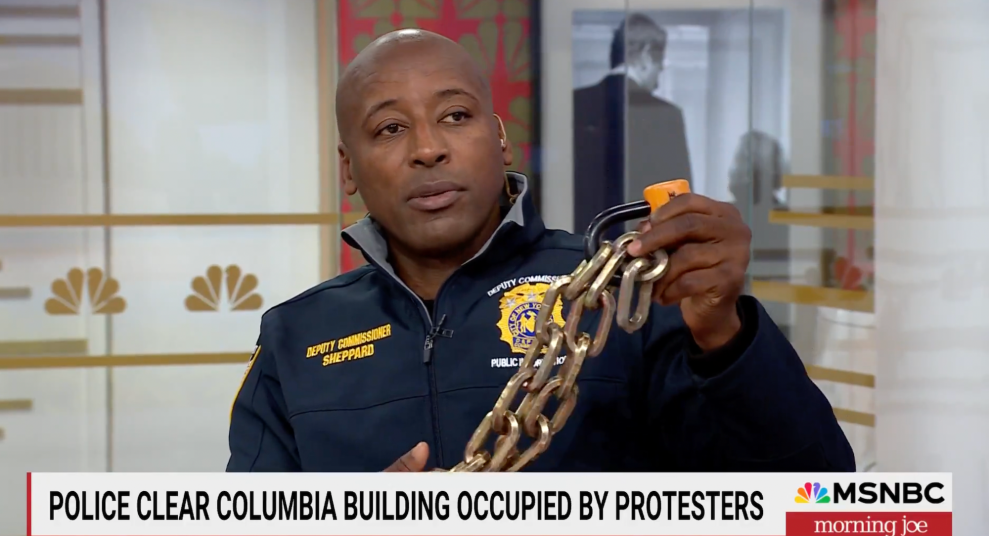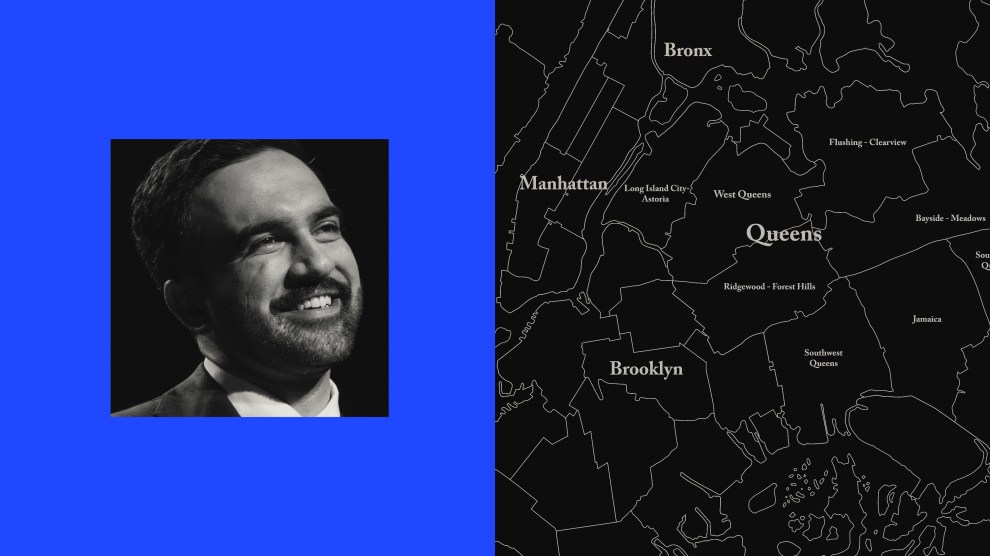
MSNBC
The morning after the New York Police Department arrested pro-Palestinian protesters at Columbia University, the city’s mayor appeared satisfied.
“This is not a department that was dealing with one production at a time,” Mayor Eric Adams said, flanked by top police officials, during a press conference on Wednesday. “You have to be a well-organized professional operation to deal with all of those encounters.”
This was part and parcel for Adams, a former NYPD officer with a habit of calling the city’s law enforcement “my cops” and “my police department.“ But then came the first inklings of what has become Adams’ calling card as he justifies the crackdown on protests.
“When I first started seeing the protest take place in the city, it just did not fit right,” he explained. “I saw similar indicators from the Black Lives Matter march when it was brought to my attention that there were those who came to the city to disrupt our city.” The mayor then claimed that an investigation had confirmed what had been “feared”: New York City had fallen victim to a global phenomenon in which “outside agitators” sought to radicalize young people. (For what purpose, the mayor wouldn’t say.)
Adams continues to commit to such vaguery. When repeatedly pressed for specific numbers by multiple news outlets the mayor stuck to variations of “I don’t think that matters.”
The mayor goes on to say "One professor poisoning a classroom of students" is just as bad as 50.
— Dana Rubinstein (@danarubinstein) May 2, 2024
There isn’t much doubt that some non-students were identified in the mix of the reported 300 people arrested this week; outrage over Israel’s war spreads far beyond Columbia’s campus, which hosts acres of publicly accessible space. But consider for a moment that the public is being asked to trust that nefarious “outside agitators” include Nahla Al-Arian, a retired elementary school teacher who was not on Columbia’s campus this week and yet was specifically called out by Adams. The narrative suffered another public embarrassment when what appeared to be an ordinary bike lock was offered as evidence that sinister individuals had infiltrated the city’s elite campuses. When the slippery language of who is “affiliated” with the schools is exploited, it seems to only serve to make the protests about anything but the actual issues at play. (As the city’s top brass has made clear, the specifics don’t matter anyway.)
“It’s scary because the whole world is watching what’s going on at Columbia, and these events need to be documented in real time, accurately,” Barnard student and WKCR reporter Sarah Barlyn said. “The mayor should be spreading accurate information. So should major outlets such as CNN….I wish individuals who weren’t privy to accurate information just wouldn’t share it at all.”
This is the “outside agitator” narrative stretched to its limits. It happens across political lines—the right’s hyperfocus on antifa and condemnation of the Black Lives Matter movement; former House Speaker Nancy Pelosi encouraging the FBI to investigate pro-Palestinian protesters. These instances tend to share a common goal of seeking to explain why police force is justified. In the case of Adams, the talking point refuses to see a city whose residents could be disgusted with bloodshed, so it must be someone else, an individual with questionable origins, that’s come to fuck shit up. Say it enough times and national media quickly adopts it too.
That all of this is happening against the backdrop of devastating force in Gaza shouldn’t be lost on anyone, especially on the exceedingly few individuals who have the power to create change. “No,” President Biden said on Thursday when asked if campus protests have prompted him to reconsider his support for Israel. The public can at least trust him on that one.
















